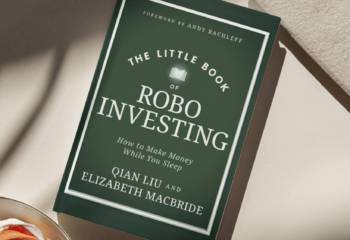IRAs, or individual retirement arrangements, are a popular way to save for retirement, and with good reason: IRAs have numerous benefits. You may already be familiar with some of the different types of IRAs, including traditional IRAs and Roth IRAs. But you might not know it’s possible for people who typically don’t qualify for a Roth IRA to convert a traditional IRA into a Roth IRA. This process is known as a “Roth conversion” or a “backdoor Roth IRA,” and in this post, we’ll walk you through two common scenarios where they’re likely to be beneficial.
IRA basics
First, let’s review a few basics about IRAs. IRAs are retirement accounts you open for yourself, unlike 401(k) plans which are offered through your employer. Roth and traditional IRAs have lower contribution limits than 401(k)s and they tend to have more flexibility around investment options. Here are some highlights at a glance:
- Traditional IRAs: In general, depending on your income and whether you have a 401(k) plan at work, you get a tax deduction in the year you contribute to a traditional IRA and then pay taxes on withdrawals.
- Roth IRAs: You don’t get a tax deduction when you contribute to a Roth IRA, but withdrawals after age 59 ½ are tax-free. You can’t contribute directly to a Roth IRA if you earn over $153,000 as a single filer or over $228,000 as a married joint filer in 2023 (those numbers rise to $161,000 and $240,000 respectively in 2024).
The tax advantages of both account types can be significant, but the tax-free growth and withdrawals you get with a Roth IRA can be especially powerful. Not everyone is eligible to contribute to a Roth IRA directly, so that’s where Roth conversions come in. A Roth conversion is when you move money from a traditional IRA to a Roth IRA. You might owe taxes in the year of the conversion, depending on whether you have any pre-tax funds in your account, but then your withdrawals from your Roth IRA after age 59 ½ are tax-free.
Let’s look at two instances where a Roth conversion is likely to be beneficial.
Scenario 1: One-off Roth conversion in a low-earning year
Let’s say you know you’re in an unusually low-earning year. Maybe you’re going to grad school or you’re taking time off to travel. You have an existing traditional IRA with some pre-tax funds in it (either because you rolled over a 401(k) from a previous employer or you contributed to one directly), and since you’re in a lower-than-usual tax bracket, now could be a good time to pay taxes on the conversion and then benefit from the tax-free growth and withdrawals you get with a Roth IRA in the future.
Let’s look at an example of how this might work. Assume your ordinary income tax rate will be 20% this year instead of the 40% it would be in a typical year. You have $10,000 (pre-tax) in a traditional IRA, and you’re wondering if you should execute a Roth conversion. If you were to leave the money in a traditional IRA for 30 years, assuming a 6% return compounded annually, it would be worth $34,460.95 after paying a 40% tax upon withdrawal. However if you converted the account to a Roth IRA, you’d pay $2,000 in taxes now (that’s your 20% current income tax rate multiplied by the value of the account), but the value of the remaining $8,000 compounded at 6% annually over the next 30 years would be worth $45,947.93 after taxes, because you wouldn’t owe any additional taxes upon withdrawal as long as you were at least 59 ½ years old. In other words, converting your traditional IRA in a low-earning year has the potential to give your retirement savings a big boost.
Scenario 2: Backdoor Roth to save more for retirement
Let’s assume you earn too much to contribute directly to a Roth IRA and you aren’t eligible to deduct contributions to a traditional IRA (either because your income is too high or because you have a 401(k) plan at work), but you still want to save some additional money for retirement. Assuming you don’t have any pre-tax money in a traditional IRA and don’t anticipate needing the funds within five years, you’re likely to benefit from a type of Roth conversion known as a “backdoor Roth.”
Again, let us explain with an example. If you fit the description above, you can either invest by opening a taxable investment account or making a non-deductible contribution to a traditional IRA. If you invest $7,000 in a taxable investment account at a 6% return compounded annually over 30 years, ignoring the taxes you’d have to pay on dividends and the gains associated with account rebalancing, your account would be worth $40,204.44 at retirement, but you’d still owe capital gains taxes when you sell to withdraw. If your capital gains tax rate in retirement were 15% then that account would only be worth $35,223.77 after taxes. However if you contributed $7,000 (after-tax) to a traditional IRA (this is the 2024 contribution limit if you are under 50) instead and converted to a Roth IRA, your account would be worth $40,204.44 at withdrawal because you would owe no taxes on the sales (again, assuming you were at least 59 ½ at the time).
When a Roth conversion isn’t right for you
If you’re still unsure, here are two signs that a Roth conversion probably isn’t right for you:
- You plan to retire within five years. You have to wait at least five years to withdraw earnings from a Roth IRA with no penalty, even if you are 59 ½ years old (the typical age at which you can start taking withdrawals with no penalties).
- You don’t have enough cash on hand to pay taxes on the conversion. These taxes could be significant if you have a lot of pre-tax money in a traditional IRA. You can estimate them by multiplying the amount of pre-tax money in your traditional IRA by whatever you expect your marginal tax rate to be.
Automation makes it easy
Typically, the Roth conversion process involves a bunch of paperwork. But at Wealthfront, we’ve automated the process so you can convert a Wealthfront SEP or traditional IRA to a Roth IRA with just a few taps on your phone. Automated Roth conversions are just one of the many tax-minimization features we offer you at no additional cost, including:
- Tax-Loss Harvesting
- Direct Indexing
- Tax-minimized withdrawals
- Tax-minimized brokerage transfer
- Tax-sensitive rebalancing
At Wealthfront, we want to help you build long-term wealth so you can meet your financial goals (like retirement!) with confidence. We hope the information in this post helps you make an informed decision about Roth conversions. For even more help planning for retirement, check out our IRA calculator.
Disclosure
The information contained in this communication is provided for general informational purposes only, and should not be construed as investment or tax advice. Nothing in this communication should be construed as a solicitation, offer or recommendation to buy or sell any security. Any links provided to other server sites are offered as a matter of convenience and are not intended to imply that Wealthfront Advisers, Wealthfront Brokerage or any affiliate endorses, sponsors, promotes and/or is affiliated with the owners of or participants in those sites, or endorses any information contained on those sites, unless expressly stated otherwise.
All investing involves risk, including the possible loss of money you invest, and past performance does not guarantee future performance. Historical returns, expected returns, and probability projections are provided for informational and illustrative purposes, and may not reflect actual future performance. Please see our Full Disclosure for important details.
Investment management and advisory services are provided by Wealthfront Advisers LLC (“Wealthfront Advisers”), an SEC-registered investment adviser, and brokerage related products, including the Cash Account, are provided by Wealthfront Brokerage LLC, a Member of FINRA/SIPC.
Wealthfront Advisers and its affiliates do not provide legal or tax advice and do not assume any liability for the tax consequences of any client transaction. Clients should consult with their personal tax advisors regarding the tax consequences of investing with Wealthfront Advisers and engaging in these tax strategies, based on their particular circumstances. Clients and their personal tax advisors are responsible for how the transactions conducted in an account are reported to the IRS or any other taxing authority on the investor’s personal tax returns. Wealthfront Advisers assumes no responsibility for the tax consequences to any investor of any transaction.
The effectiveness of the tax-loss harvesting strategy to reduce the tax liability of the client will depend on the client’s entire tax and investment profile, including purchases and dispositions in a client’s (or client’s spouse’s) accounts outside of Wealthfront Advisers and type of investments (e.g., taxable or nontaxable) or holding period (e.g., short- term or long-term).
Wealthfront Advisers’ investment strategies, including portfolio rebalancing and tax loss harvesting, can lead to high levels of trading. High levels of trading could result in (a) bid-ask spread expense; (b) trade executions that may occur at prices beyond the bid ask spread (if quantity demanded exceeds quantity available at the bid or ask); (c) trading that may adversely move prices, such that subsequent transactions occur at worse prices; (d) trading that may disqualify some dividends from qualified dividend treatment; (e) unfulfilled orders or portfolio drift, in the event that markets are disorderly or trading halts altogether; and (f) unforeseen trading errors. The performance of the new securities purchased through the tax-loss harvesting service may be better or worse than the performance of the securities that are sold for tax-loss harvesting purposes.
Tax loss harvesting may generate a higher number of trades due to attempts to capture losses. There is a chance that trading attributed to tax loss harvesting may create capital gains and wash sales and could be subject to higher transaction costs and market impacts. In addition, tax loss harvesting strategies may produce losses, which may not be offset by sufficient gains in the account and may be limited to a $3,000 deduction against income. The utilization of losses harvested through the strategy will depend upon the recognition of capital gains in the same or a future tax period, and in addition may be subject to limitations under applicable tax laws, e.g., if there are insufficient realized gains in the tax period, the use of harvested losses may be limited to a $3,000 deduction against income and distributions. Losses harvested through the strategy that are not utilized in the tax period when recognized (e.g., because of insufficient capital gains and/or significant capital loss carryforwards), generally may be carried forward to offset future capital gains, if any.
Wealthfront, Wealthfront Advisers and Wealthfront Brokerage are wholly owned subsidiaries of Wealthfront Corporation.
Copyright 2024 Wealthfront Corporation. All rights reserved.
About the author(s)
Leotie Fukawa is a Product Specialist at Wealthfront and a Certified Financial Planner (CFP). She holds Series 66 and Series 7 licenses from FINRA. View all posts by Leotie Fukawa, CFP



